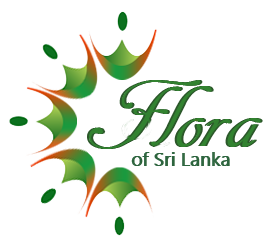
Tuber (absent in some cultivars in favour of bulbils) usually solitary, globose to pyriform or somewhat lobed when large, weighing up to 1 kg, nauseous due to various quantities of saponins (edible in some cultivars), the surface purplish black or earth-coloured, covered abundantly by small feeding roots (smooth in some cultivars), the tissue white to lemon-yellow and somewhat flecked with purple, mucilaginous, becoming brown or orange on exposure; long roots produced above the tuber. Stem solitary or rarely 2, up to 30 m long and 1 cm in diameter, usually flecked with purple brown, terete or narrowly alate, glabrous. Bulbils abundant, axillary or among staminate inflorescences or rarely between petiole and leaf blade, globose (flattened in some African forms), weighing up to 0.5(2) kg, warty, or smooth when large, the tissue as in tuber. Leaves alternate; blade cordiform, often broader than long, abruptly or long-acuminate with up to 3.5 cm long apex, 5—25 x 5—26 cm, glabrous, slightly glossy or dull on both surfaces; primary veins campylodromous, 5—11, the inner 5 reaching the apex, the outermost pair suprabasal; secondary veins widely acute to right-angled, almost straight, parallel; reticulation faintly distinct or obscure; margin distinct; petiole usually slightly shorter than the blade, 3—21 cm long, channelled above, glabrous; stipules lunate, auriculate, 2—8 x 1.5—4 mm, membranous, sometimes absent. Staminate inflorescence axillary or terminal, usually solitary, paniculate or spicate; panicles pendent when long, the rhachis 5—70 cm long, glabrous; spikes up to 6 per axil of leaf or inflorescence bract, the axis ± firm, 3—20 cm long, sharply angled or narrowly alate, glabrous. Flowers 10—80 per spike, sessile, 1.8—6.5 mm long, completely open at anthesis, glabrous, whitish to pale pink, fragrant; bract ovate to broadly ovate, long-acuminate, 1—2.5 x 0.7—1.4 mm, bracteole ovate, acuminate to caudate, 0.7—1.5 x 0.4—0.7 mm; outer tepals lanceolate, 1.5—6 x 0.5—1.2 mm, somewhat fleshy, spreading; inner tepals similar to outer tepals but narrower; stamens 6, free or adnate at base of tepals, the filament 0.1—0.4 mm long, the anther 0.2—0.4 mm long, the connective not expanded beyond the width of the filament; pistillode represented by 3 conical lobes, up to 0.3 mm long. Pistillate inflorescence axillary, up to 6 per axil, spicate, usually pendent, the axis 8—40 cm long, sharply angled or narrowly alate, glabrous. Flowers up to 50 per spike, sessile at anthesis, glabrous, white or greenish white; bract ovate, long-acuminate or caudate, 1.2—2.8 x 1—2 mm; bracteole similar to bract, 0.8—2.2 x 0.6—1 mm; tepals as in staminate flower but slightly shorter, 1.8—4.3 x 0.5—0.8 mm; staminodes 6, adnate to base of tepals, c. 0.5 mm long; styles connate nearly to top, the stigmas reflexed and shortly divided into two lateral lobes and one lower median lobe. Capsules 10—35 per spike, closely imbricate, longer than broad, oblong, basally rounded or obtuse, apically truncate to rounded or obtuse, 1.8—2.8 x 1—1.5 cm, glossy, often bronzed or flecked with red, glabrous. Seed 12—20 x 5—7 mm including the wing, cuneate at base, smoky brown. (FOC)
Dioscorea sativa sensu Hook.f., non L.
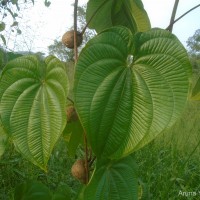
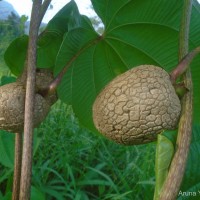
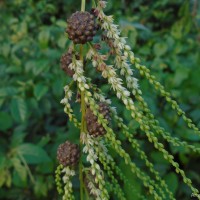
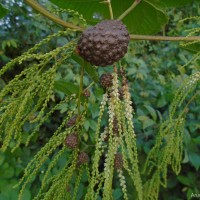

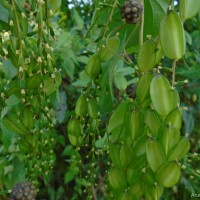
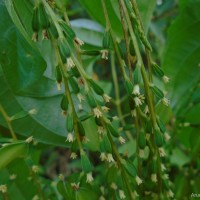
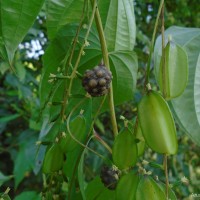
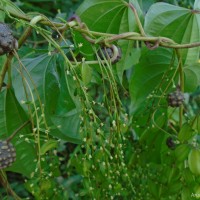
.jpg)
.jpg)
.jpg)




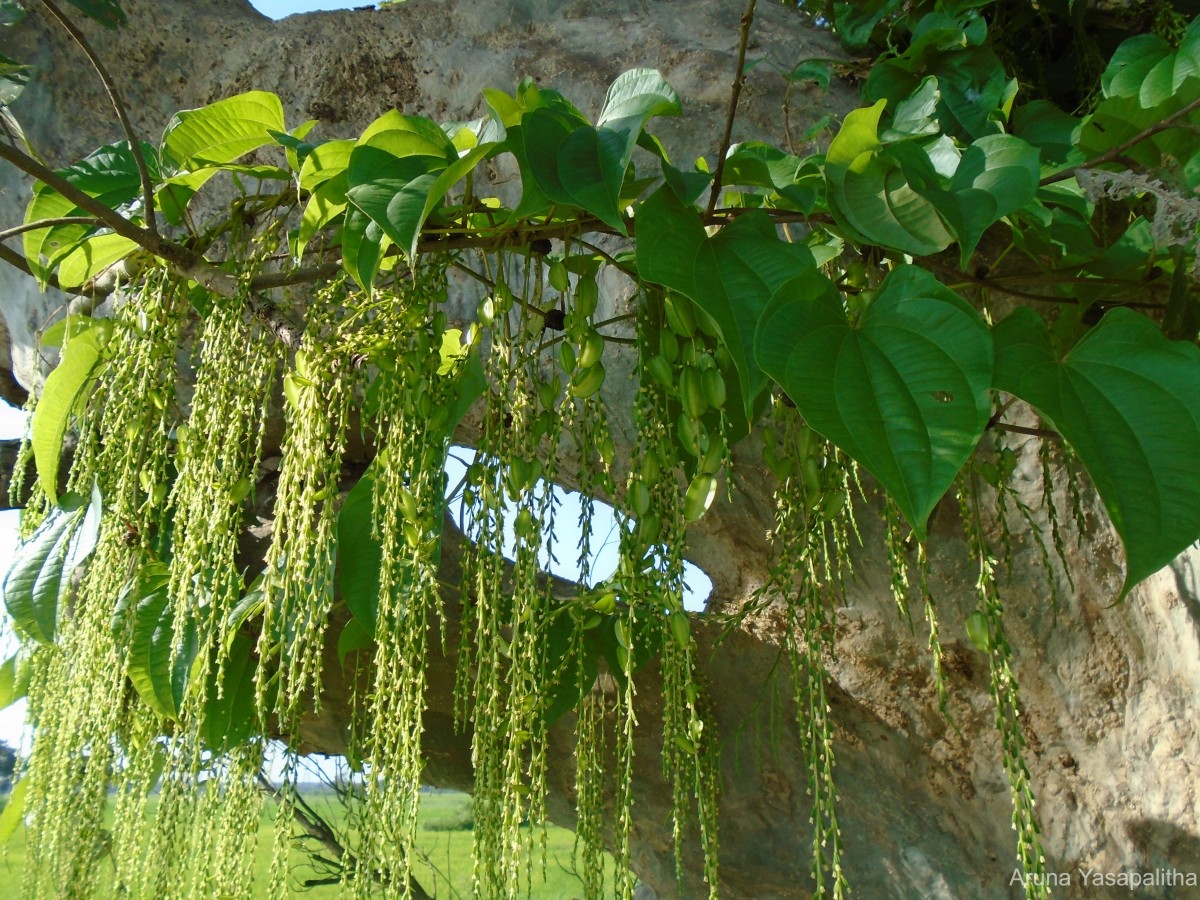




.jpg)
.jpg)
.jpg)
